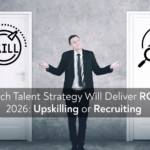In 2025, websites aren’t static assets. They’re adaptive ecosystems. And AI is the new backbone.
If your website is still a static container of pages, you’re already behind. The modern web is learning, optimizing, and evolving in real time—and the teams winning today aren’t the ones building faster. They’re the ones building smarter.
According to a 2025 TechRepublic study, over 72% of mid-sized companies are now embedding AI in web development—not just for automation, but to improve UX, SEO, security, and speed.
Let’s walk through the seven biggest AI-powered shifts reshaping web development right now—and why most businesses are quietly playing catch-up.
1. The Death of Manual Code
Developers aren’t becoming obsolete—they’re becoming unburdened.
With tools like GitHub Copilot and CodeWhisperer, Use of AI in web development now handles boilerplate code, syntax assistance, and error detection. Developers are freed to focus on system architecture, UI strategy, and scalability.
📊 MIT CSAIL reports that AI-assisted workflows reduce development time by up to 30%.
Takeaway:
If your dev team isn’t using AI as leverage, you’re overpaying for the slow lane.
2. UX That Adapts Itself—Live
User interfaces no longer just respond to clicks—they anticipate them.
With AI in web development, websites now adapt layouts, surface relevant content, and alter flows dynamically based on real-time user signals. Micro-behaviors like scroll velocity, hover intent, and bounce patterns drive live personalization.
McKinsey found that dynamic UX optimization increases web conversion rates by 5–8x.
Takeaway:
Great design isn’t static. It’s predictive.
3. SEO That Thinks Like Google
2025 SEO isn’t just metadata and keyword matching—it’s machine learning.
AI-powered SEO tools like Clearscope, SurferSEO, and MarketMuse now track search intent shifts, semantic trends, and SGE updates to optimize content dynamically—not quarterly.
With Google’s new Search Generative Experience (SGE), real-time semantic structuring is already a ranking factor.
Takeaway:
If your SEO isn’t evolving in real time, your visibility is eroding by the minute.
4. Chat Isn’t a Feature. It’s a Funnel.
AI-powered chatbots are no longer a support tool. They’re on-page sales engines.
With natural language processing (NLP), modern conversational interfaces now guide users to answers, recommend products, qualify leads, and even close micro-conversions—without human intervention.
Juniper Research projects that 75% of web interactions will be handled by AI agents by 2026.
Takeaway:
Your most valuable CTAs may soon be delivered by a bot.
5. Compliance That Doesn’t Slow You Down
Accessibility standards (like WCAG and ADA) are tightening, but meeting them doesn’t have to mean manual redesign.
AI tools like accessiBe and EqualWeb now automate text contrast, screen reader flows, keyboard navigation, and alt text tagging in real time—keeping you compliant without compromising design.
Forrester found accessible sites convert 15% higher on average than those that aren’t.
Takeaway:
Accessibility isn’t red tape—it’s revenue.
6. Web Security That’s Predictive, Not Reactive
Modern cyber threats don’t wait. Neither should your defense systems.
AI is being deployed to monitor traffic patterns, detect anomalies, and proactively isolate zero-day vulnerabilities before they can be exploited—embedding protection into the CI/CD pipeline.
AI-led threat detection responds 60% faster than traditional systems (CSO Online, 2024).
Takeaway:
Don’t just secure your site. Let it secure itself.
7. No-Code Is No Joke
No-code tools have graduated. Platforms like Webflow, Framer, and Bubble now offer full CMS integration, logic flows, API connectivity, and performance optimization—while AI auto-tunes the UX.
Gartner estimates 75% of all apps will be built on low-code/no-code platforms by 2026.
Takeaway:
If you’re still waiting on developers for every web iteration, you’re bottlenecking your own growth.
Final Word: Is Your Website Built to Adapt?
Aesthetics don’t scale. Intelligence does.
If your web infrastructure isn’t making strategic decisions—about layout, performance, or content—you’re building in friction while your competitors are removing it.
The future of web development isn’t flashy. It’s quietly smarter.
And those who integrate AI early won’t just win traffic—they’ll win trust, time, and total control over digital outcomes.
Where RAPS Comes In
At RAPS, we don’t just update websites. We rebuild digital foundations—AI-powered, performance-aligned, and engineered for growth.
From UX and SEO to security, compliance, and scalability, our approach to web development blends machine precision with human strategy—so your site performs like your business depends on it.
Because it does.
FAQs
Is AI web development only for enterprise brands?
Not anymore. We use the same tools to empower startups and SMBs.
Will AI replace web developers?
No—it enhances them by removing low-value, repetitive work.
What’s the ROI of AI-driven UX?
Up to 8x conversion improvement, per McKinsey.
Does RAPS offer end-to-end web development?
Yes—from audit to deployment, strategy to optimization.
How do I get started?
Book a tech audit with RAPS. We’ll show you exactly where AI can amplify results.






Leave a Reply